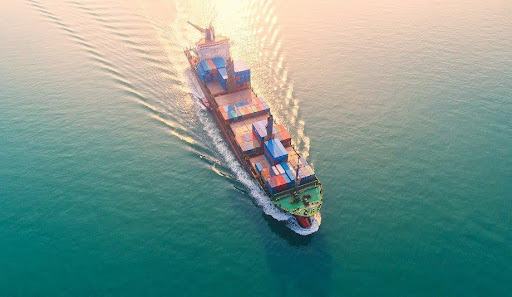Sail into the future with green shipping corridors! Rotterdam and Singapore lead the charge, showcasing sustainable maritime routes powered by zero-emission fuels. Explore the voyage towards eco-friendly shipping and a cleaner, greener maritime horizon.
In a bid to revolutionize the maritime industry and combat greenhouse gas emissions, global shipping hubs are increasingly embracing the concept of green shipping corridors. Rotterdam, Europe’s largest port, and Singapore have joined forces to pioneer one of the world’s first long-distance green shipping corridors. This initiative aims to facilitate the use of zero or low-emission fuels, such as green ammonia and methanol, to create environmentally sustainable shipping routes. As the maritime sector gears up for a transformative shift, this article delves into the significance of green shipping corridors, the challenges faced by the industry, and the global push towards sustainable shipping solutions.
The Green Corridor Concept:
Green shipping corridors involve the establishment of routes where cargo ships exclusively use zero or low-emission fuels. Rotterdam and Singapore, through their collaborative effort, are building storage facilities for green fuels, setting the stage for the practical implementation of these corridors. The first container ship, Laura Maersk, powered by methanol, recently sailed between Singapore and Rotterdam, showcasing a substantial reduction in greenhouse gas emissions.
COP26 and the Clydebank Declaration:
The concept of green shipping corridors gained momentum at COP26 with the Clydebank Declaration, endorsed by 22 countries, committing to creating at least six corridors by the mid-2020s. The recently concluded COP28 saw the announcement of new corridors, reinforcing the global commitment to combatting climate change within the maritime industry. The International Maritime Organization’s pledge to achieve net-zero emissions “by or around” 2050 further underscores the urgency for sustainable shipping solutions.
Challenges and Industry Dynamics:
While the vision of green shipping corridors is promising, the maritime industry faces substantial challenges in transitioning to alternative fuels. Presently, only 0.6% of global cargo ships run on alternative fuels, and a mere 15-16% of vessels on order are designed for dual or alternative fuel use. Shipbuilders must confront the monumental task of reshaping vessel designs to accommodate these eco-friendly alternatives.
Industry Initiatives and Demand:
Noteworthy initiatives from industry giants like Amazon, Ikea, and Maersk, among others, signal a growing demand for green shipping. Companies are renewing their commitment to reduced emissions contracts and investing in ships powered by ammonia. Cargo firm North Sea Container Line and Hoegh Autoliners are pioneering ships powered by ammonia, further accelerating the adoption of alternative fuels.
Looking Ahead:
Despite the challenges, industry experts foresee a substantial increase in ammonia production by 2050. However, concerns linger about the scalability of infrastructure and vessel capabilities to support this transition. Maritime economist Martin Stopford warns of potential resistance due to the expected costliness of future fuels, emphasizing the need for careful consideration amid competing sectors.
The emergence of green shipping corridors marks a pivotal moment in the maritime industry’s quest for sustainability. While challenges persist, the collaborative efforts of global ports and the commitment of industry players provide hope for a greener future in maritime transport. As the world steers towards net-zero emissions, the maritime sector’s journey to cleaner, more sustainable practices is essential for the overall success of the global decarbonization agenda.




